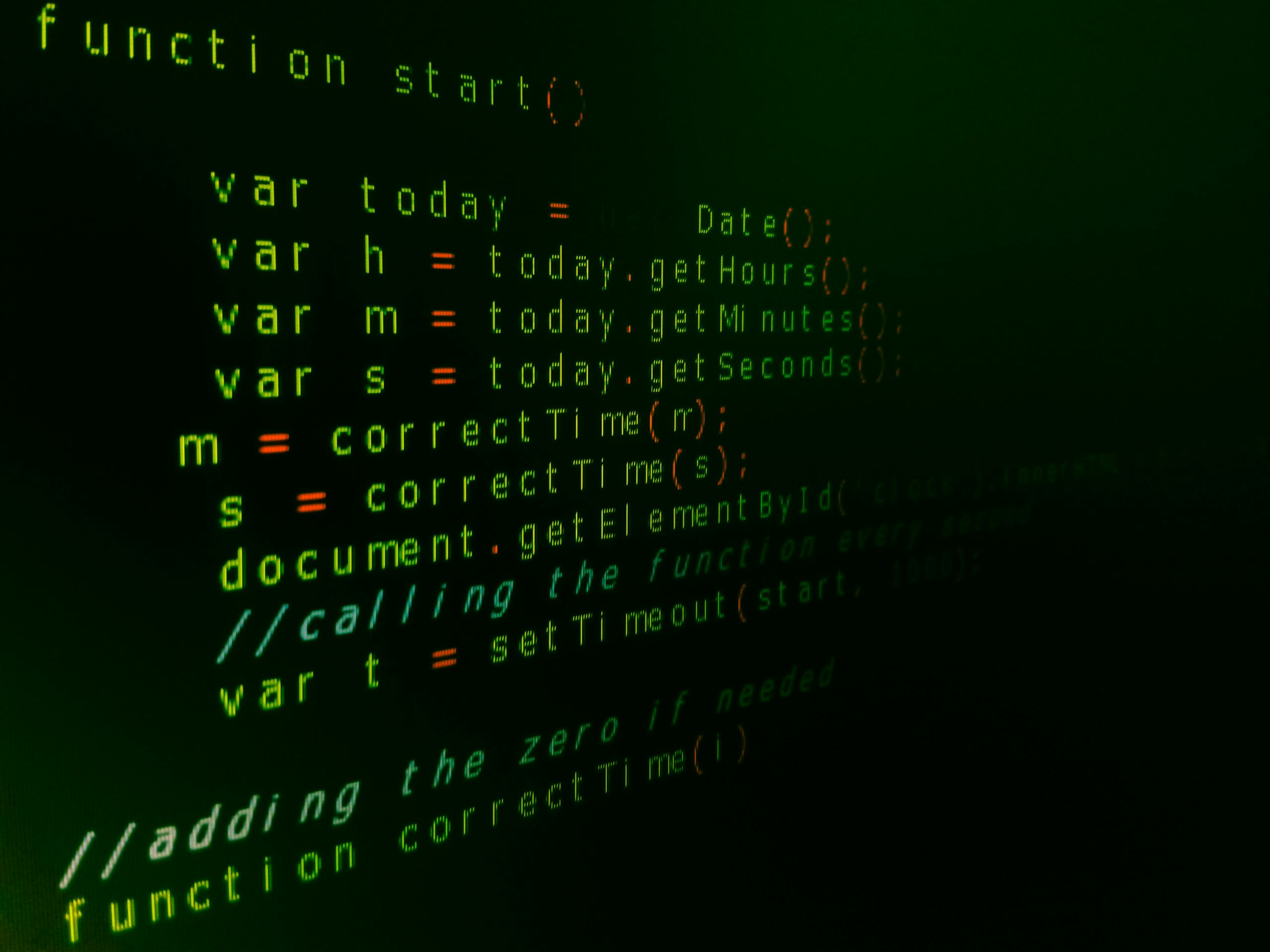Is your business vulnerable to cyber attacks? Learn about key indicators and steps to enhance your cybersecurity defenses in this informative article. Safeguard your valuable assets now!
As technology continues to advance, so do the threats posed by cyber attacks. It is becoming increasingly crucial for businesses to evaluate their vulnerability to these attacks and take proactive measures to protect their sensitive information. In this article, you will learn about the key indicators that may indicate your business is at risk and the steps you can take to enhance your cybersecurity defenses. Don’t wait until it’s too late – discover if your business is vulnerable to cyber attacks now and safeguard your valuable assets.

Identifying potential vulnerabilities
Weak or outdated software
One of the potential vulnerabilities that can leave businesses susceptible to cyber attacks is the use of weak or outdated software. Outdated software often lacks the necessary security patches and updates that can protect against emerging threats. Hackers are constantly searching for vulnerabilities in software to exploit, and if businesses do not regularly update their software, they may become an easy target. It is crucial for organizations to stay proactive in updating their software to ensure that they have the latest security features and protections.
Inadequate network security measures
Another potential vulnerability that businesses should be aware of is inadequate network security measures. Without strong network security measures in place, attackers may have an easier time gaining unauthorized access to sensitive information. This can include weak firewalls, lack of intrusion detection systems, and insufficient encryption protocols. Businesses must invest in robust network security solutions and regularly update them to protect against potential cyber attacks.
Lack of employee training
A commonly overlooked vulnerability is the lack of employee training in cybersecurity best practices. Employees can unintentionally become entry points for attackers if they are not adequately trained to identify and respond to threats. Phishing emails, social engineering attacks, and other tactics often target employees who may unknowingly expose confidential information or grant unauthorized access. Businesses should prioritize regular cybersecurity training sessions to educate employees on potential risks and how to prevent them.
Insufficient backup and recovery systems
In the event of a cyber attack, businesses without sufficient backup and recovery systems may suffer significant losses. Ransomware attacks, data breaches, and other cyber incidents can lead to data loss or destruction, which can severely impact a business’s operations. Having robust backup and recovery systems in place ensures that businesses can recover critical data and resume operations after an attack. Regularly backing up data and testing the recovery process is essential to minimize downtime and potential losses.
Assessing the strength of passwords
Using weak passwords
One of the most common mistakes that individuals and businesses make is using weak passwords. Weak passwords are easily guessable or crackable by attackers, making unauthorized access to accounts much simpler. Businesses should enforce strict password policies that require employees to use strong passwords containing a combination of uppercase and lowercase letters, numbers, and special characters. Additionally, implementing a password management system can help employees create and store complex passwords securely.
Using the same password for multiple accounts
Another dangerous practice is using the same password for multiple accounts. If one account gets compromised, the attacker can potentially gain access to all accounts where the same password is used. Businesses should educate employees on the importance of using unique passwords for each account to mitigate the risk of a data breach. Implementing multi-factor authentication (MFA) can provide an extra layer of security by requiring additional verification methods, such as a fingerprint or one-time password.
Neglecting to change passwords regularly
Failing to change passwords regularly can also leave accounts vulnerable to unauthorized access. If a password is compromised, regular password changes ensure that the compromise remains temporary. Businesses should encourage employees to change their passwords at regular intervals, such as every 90 days, and to avoid reusing old passwords. Employing password expiration policies can help enforce regular password changes and reduce the risk associated with static credentials.
Securing sensitive data
Encryption of sensitive information
One of the most effective ways to secure sensitive data is through encryption. Encryption converts plain text data into ciphertext, rendering it unreadable without the appropriate decryption key. Encryption should be applied to all sensitive data, whether it is at rest, in transit, or being processed. Strong encryption algorithms and protocols should be used to ensure the confidentiality and integrity of sensitive information, reducing the risk of unauthorized access or data breaches.
Two-factor authentication
In addition to passwords, implementing two-factor authentication (2FA) can add an extra layer of security for accessing sensitive data. 2FA requires users to provide two different forms of identification, such as a password and a unique code sent to their mobile device. Even if an attacker manages to obtain a password, they would still require the second factor to access the account. This significantly reduces the risk of unauthorized access, especially in cases where passwords may have been compromised.
Strict access controls
To protect sensitive data, businesses should implement strict access controls that limit access rights to those who genuinely need it. Access control mechanisms should be based on the principle of least privilege, granting users the minimum level of access necessary to perform their tasks. This minimizes the potential damage that can occur if an unauthorized user gains access to sensitive data. Regularly reviewing and updating access controls ensures that access privileges remain appropriate as roles and responsibilities evolve within the organization.
Protecting against malware and viruses
Installing robust antivirus software
One of the fundamental defenses against malware and viruses is the installation of robust antivirus software. Antivirus software scans files and programs for known malware signatures and attempts to block or remove them. It is essential to invest in reputable antivirus software that provides real-time protection, automatic updates, and regular scans to detect and remove malicious software. Keeping antivirus software up to date is crucial, as new threats are constantly being discovered and addressed by software providers.
Regularly updating antivirus definitions
Antivirus software relies on up-to-date virus definitions to effectively identify and thwart the latest malware. Virus definitions contain information about known malware signatures and patterns that the antivirus software uses to detect and neutralize threats. It is vital to regularly update antivirus definitions to ensure that the software can effectively recognize and respond to new and emerging threats. Without regular updates, antivirus software may not provide adequate protection against evolving malware and viruses.
Performing malware scans
To augment real-time protection, businesses should regularly perform comprehensive malware scans on their systems. These scans help identify any existing malware that may have slipped past the antivirus software or any hidden threats that may be dormant. Regularly scheduled scans can be set to run during non-business hours to minimize disruption and maximize security. Promptly removing any detected malware is crucial to preventing further damage and minimizing the risk of data loss or unauthorized access.

Securing physical devices
Implementing device encryption
Securing physical devices, such as laptops, mobile devices, and external drives, is just as critical as protecting digital assets. Device encryption should be implemented to ensure that the data stored on these devices remains secure if they are lost or stolen. Device encryption converts data into an unreadable format without the correct encryption key, making it useless to unauthorized individuals. By encrypting devices, businesses significantly reduce the risk of data breaches and uphold the confidentiality and integrity of sensitive information.
Using remote wiping capabilities
In addition to encryption, businesses should leverage remote wiping capabilities to protect sensitive data on lost or stolen devices. Remote wiping allows businesses to remotely erase data from a device that may be in unauthorized hands, ensuring that confidential information does not fall into the wrong hands. This feature is especially useful for mobile devices that may contain sensitive business data. Implementing remote wiping capabilities provides an additional layer of security and helps mitigate the potential consequences of device theft or loss.
Restricting physical access to devices
Ensuring physical access controls can prevent unauthorized individuals from tampering with or accessing devices containing sensitive data. Businesses should establish policies that restrict physical access to devices to authorized personnel only. This includes employing measures like secure locks, biometric access controls, and surveillance systems to monitor and prevent unauthorized access. By limiting physical access, businesses can minimize the risk of physical data breaches and unauthorized data manipulation.
Monitoring network traffic
Utilizing network monitoring tools
Network monitoring tools play a vital role in identifying potential security threats by constantly monitoring network traffic. These tools can detect and alert administrators of suspicious or anomalous activities, such as unauthorized access attempts, unusual data transfer patterns, or network breaches. By actively monitoring network traffic, businesses can quickly identify and respond to potential cyber threats, reducing the likelihood of successful attacks and minimizing damage.
Examining logs for any suspicious activity
Examining logs from various network devices, systems, and applications is an essential part of monitoring network traffic. Logs contain valuable information about user activities, network connections, and system events, which can help identify any abnormalities or security breaches. Analyzing logs allows businesses to identify patterns of suspicious activity and respond promptly to potential threats. Implementing a centralized log management system makes it easier to review and correlate logs, providing a comprehensive view of network activity.
Implementing intrusion detection systems
Intrusion detection systems (IDS) are essential for monitoring and preventing unauthorized access to networks. IDS actively scans network traffic, searching for patterns or signatures associated with known attacks or malicious activities. When suspicious activity is detected, IDS can generate alerts or take proactive measures to respond to the potential threat. By implementing IDS, businesses can significantly enhance their ability to detect and respond to potential cyber attacks, protecting their networks and sensitive information.

Regularly updating software and systems
Applying software patches and updates promptly
Regularly updating software and systems is crucial to maintaining their security and protecting against known vulnerabilities. Software providers frequently release patches and updates to address security flaws and improve system performance. It is imperative for businesses to promptly apply these updates to ensure that their software and systems remain secure. Delaying updates increases the risk of exploitation and could leave businesses susceptible to cyber attacks targeting known vulnerabilities.
Keeping operating systems up to date
Operating systems are a particularly attractive target for hackers due to their widespread use. Keeping operating systems up to date with the latest security patches and updates is essential to prevent exploitation of known vulnerabilities. By regularly updating operating systems, businesses can address security weaknesses and minimize the risk of unauthorized access or malware infections. Additionally, automated patch management solutions can help streamline the process and ensure timely updates across all systems.
Updating firmware on network devices
Network devices, such as routers, switches, and firewalls, rely on firmware to function properly. Firmware updates often include security enhancements and bug fixes crucial for maintaining the integrity of these devices. By regularly updating firmware on network devices, businesses can address potential vulnerabilities and ensure that their network infrastructure remains secure. Keeping firmware up to date is essential in protecting against attacks targeting weaknesses in network devices.
Implementing a robust firewall
Configuring firewall rules properly
A robust firewall is an essential component of a comprehensive cybersecurity strategy. However, simply having a firewall in place is not enough. Properly configuring firewall rules is vital to ensure that it effectively blocks unauthorized network traffic while allowing essential communication. Businesses should establish and maintain a set of firewall rules that align with their security policies and specific network requirements. Regularly reviewing and updating firewall rules ensures that they mitigate potential risks and keep up with changing network environments.
Monitoring and logging firewall activity
To enhance network security and identify potential threats, businesses should actively monitor and log firewall activity. Firewall logs provide valuable information about incoming and outgoing network traffic, including connection attempts, blocked access attempts, and unusual patterns. By regularly reviewing firewall logs, businesses can detect suspicious activities, identify potential attack vectors, and respond in a timely manner. Monitoring and logging firewall activity are critical components of a robust cybersecurity strategy.
Performing regular firewall audits
Regular firewall audits help ensure that firewalls are functioning correctly and providing adequate network protection. Audits involve assessing the firewall configuration, rule effectiveness, and the overall security posture. By conducting regular audits, businesses can identify any misconfigurations or weaknesses that may compromise the firewall’s effectiveness. Addressing these vulnerabilities promptly ensures that the firewall remains a reliable defense against cyber threats and unauthorized access attempts.
Conducting vulnerability assessments and penetration tests
Identifying weaknesses in security systems
Vulnerability assessments and penetration tests are essential for identifying weaknesses and potential vulnerabilities in security systems. A vulnerability assessment involves systematically scanning networks, systems, and applications to identify any security weaknesses or misconfigurations. Penetration tests go a step further by simulating real-world attacks to identify exploitable vulnerabilities. By conducting these assessments and tests, businesses can identify potential entry points for attackers and take corrective actions to fortify their security defenses.
Testing security measures against potential attackers
To ensure the effectiveness of security measures, businesses should test them against potential attackers. This can involve employing ethical hackers or engaging professional security firms to perform controlled and authorized attacks on the organization’s systems. Through simulated attacks, businesses can gauge the resilience of their security defenses and identify any weaknesses that may have been missed. Testing security measures against realistic attack scenarios allows organizations to strengthen their cybersecurity infrastructure.
Rectifying any vulnerabilities discovered
The ultimate goal of vulnerability assessments and penetration tests is to uncover vulnerabilities and weaknesses in security systems. Once vulnerabilities are identified, prompt action must be taken to address and rectify them. This may involve applying necessary software patches, implementing additional security controls, or reconfiguring systems to close any security gaps. Businesses should prioritize remediation efforts to ensure that identified vulnerabilities are appropriately addressed and do not pose a continued risk.
Creating a comprehensive incident response plan
Establishing clear roles and responsibilities
Creating a comprehensive incident response plan is crucial for minimizing the impact of cyber attacks and effectively managing potential security breaches. An incident response plan should clearly define the roles and responsibilities of individuals involved in handling security incidents. This includes designating incident response coordinators, IT personnel, and key stakeholders who will be responsible for implementing and executing the plan. Establishing clear roles and responsibilities ensures a coordinated and swift response in the event of a cybersecurity incident.
Training employees on incident response procedures
An incident response plan is only effective if employees are aware of the procedures and protocols outlined in it. Businesses should conduct regular training sessions to educate employees about incident response procedures and their respective roles in the process. This should include training on recognizing and reporting potential security incidents, as well as guidelines for containing and mitigating the impact of an incident. Familiarity with the incident response plan empowers employees to respond proactively and effectively during a cyber attack.
Regularly testing and updating the plan
To ensure the effectiveness of an incident response plan, regular testing and updating are essential. Businesses should conduct tabletop exercises and simulated cyber attack scenarios to test the plan’s efficacy and response capabilities. These exercises help identify any gaps or weaknesses in the plan and allow for necessary adjustments and improvements. Additionally, businesses should review and update the incident response plan regularly to align with evolving threats, technological changes, and organizational updates to maintain its relevance and effectiveness.


